What is a skateboard made of?
Maple wood plates, metal trucks and more.

A complete set of a skateboard consists of different materials and components. It is essential to better understand the individual part's features to learn tricks effectively.
Summary
There are 3 major components
The Deck, the trucks, and the wheels are the essential components of a complete set of a skateboard. Bolts and nuts combine those parts. Smaller parts like bushings and bearings sometimes strongly impact how it feels to ride it.
It comes down to your preference
Skaters usually say narrower decks and lighter trucks are easier to perform flip tricks, and wider decks are for transitions or big sections. However, after all, it comes down to your preference, and you have to find the most suitable setting for your skating style. Some people, including me, find softer but responsive bushings are easier to do tricks like Treflips. Click here for more details.
Don't forget the maintenance
Skateboard components are made to be incredibly durable, but it does not mean that they last forever. Consider replacing some parts when something doesn't go right.
Simulation
The Deck
Sunmary
The deck is where the a skater stands on and other parts are attached to it. There are different sizes and shapes, but the majority of them has a kick in the tail and the nose, concaves - curved edge on the side.

Size
Most skateboard decks are made to be asymmetrical and usually the nose (the front part) is slightly bigger than the tail (the rear part). While length of decks are mainly similar - around 30 inch long, their width can vary from 7.5 to 10 inches in general and has more impact on how it feels to ride them. A narrow skateboard usually has more responsive feeling and spins/flips easily but is less stable.
Whereas a wide board is more stabile but is hard to flip and spin due to its weight. However, this does not mean a narrower board is better at flips. Some "technical" skaters actually prefer wider (around 8 - 9 inches) board. After all, it comes down to your preference so try different width of decks.
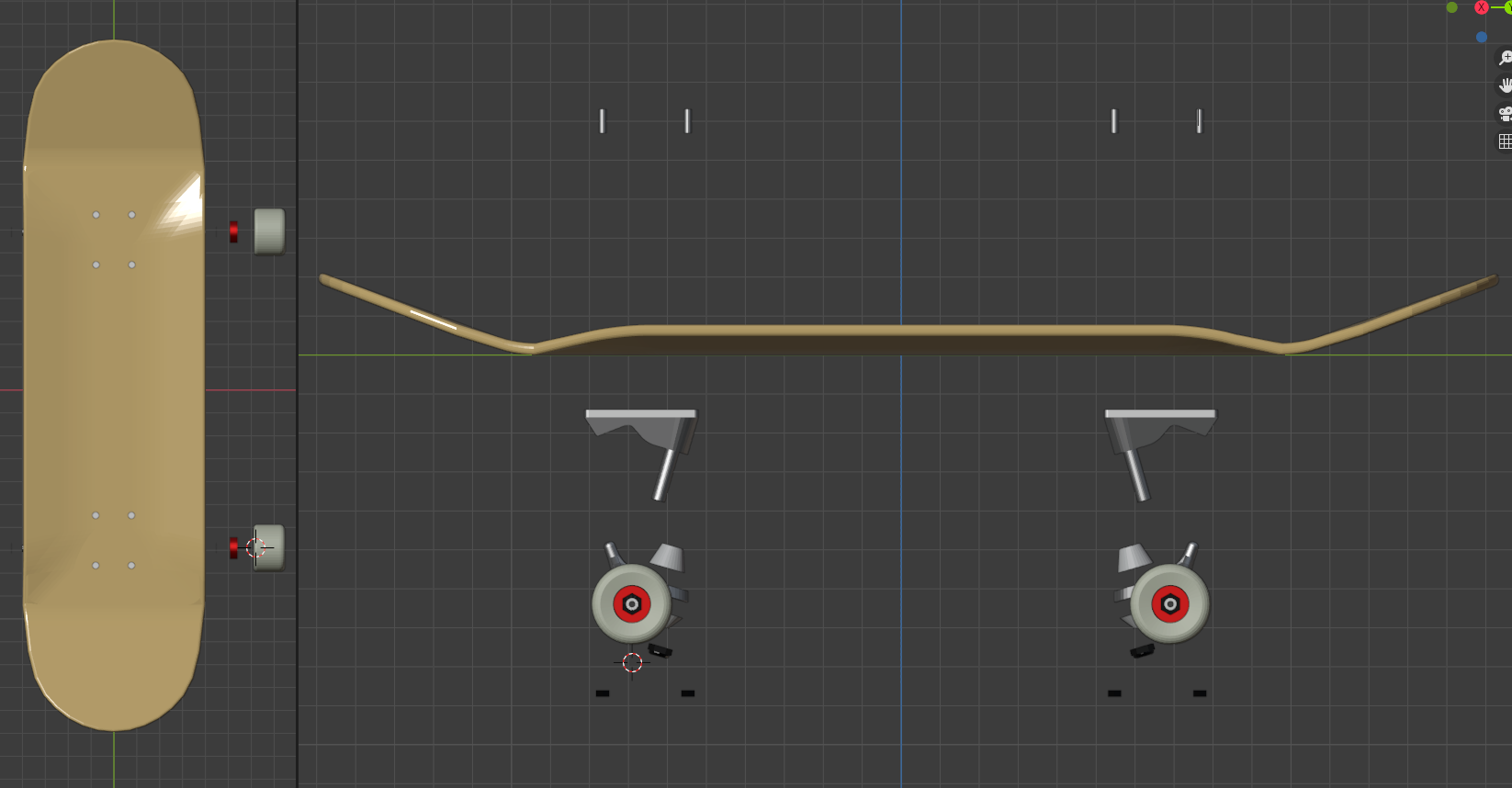
Material
Usually, a common deck is made from seven to eight layers of maple veneer laminated with glue and pressed to a form mentioned above. Some decks feature carbon disks and plates pressed inside of their layers of maple woods, increasing their durability and responsiveness.

Which one should you buy?
There are hundreds of thousands of types of skateboard decks out there. Rest assured, when you are just starting out skating, their small differences don't really matter. You may just buy one that you like - Appearance or author of its graphics, a skateboarder the deck features, brand, etc.

The Grip Tape
Upon a deck, the sandpaper alike grip tape is usually installed so a skateboarder can have a firm grip of his/her deck. The grip tape comes in different brands and roughness. Some skaters prefer grip tape with rough surface for more grip, while others prefer smoother surface for easier controllability.

The Trucks
Summary
Trucks are the most complex, important part that decides how the entire set of a skateboard feels to ride. Many people say they can skate with different decks but NOT with other trucks. Trucks bind the deck and wheels, hold the skateboarder's weight, and determine the steering angle and how it feels to ride the skateboard.

Material
A skateboard trucks are usually made of steel and and durable. They generally last months without replacement or repair. The truck is consist of several components - the axles, the kingpin, the hanger, the bushings and the baseplate. Sometimes it even comes with a plastic plate attached to its base plate so it can slide more smoothly.

Hangers
Hangers and axles determine the length of a truck's width. If it's too narrow, a skateboard becomes unstable and if it's too wide, it becomes harder to spin a skateboard. Ideally, hangers should have the same width as as the deck or it should be slightly narrower than that. Some skaters prefer trucks that's slightly wider than their decks.
Once again, it comes down to your preference after all. Hangers also affects how a skateboard grinds. Some trucks contain harder materials like titanium allowing lighter and longer grinds but less durable. Titanium trucks could also play a roll to lighten trucks.
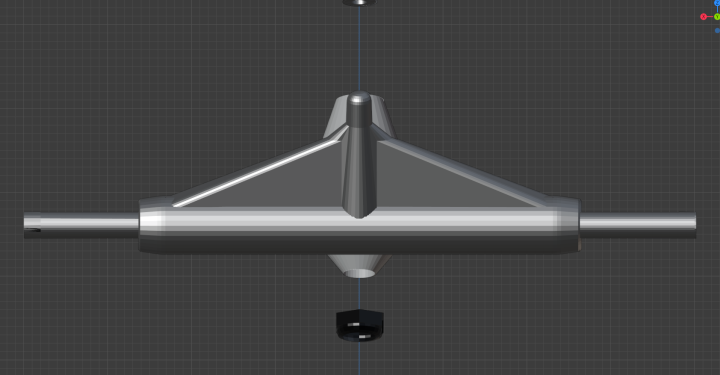
Base plate
A metal plate to which a kingpin and hangers are attached. It is mounted on a deck with four bolts.

Kingpin
A big bolt that connects the deck, baseplate and hangers. They may come in hollow to reduce weight sometimes.
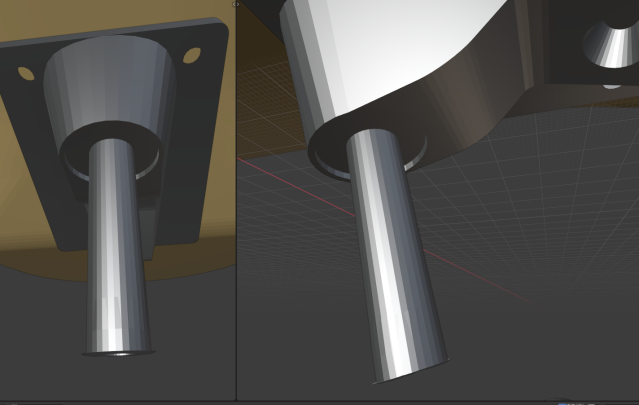
Hanger and Axle
A hanger is a metal part that is connected to the other end of the kingpin and holds axle inside. It does not only hold the wheels, it also becomes a contact point with other object during grind tricks. It is commonly made of steel, but some brands feature other materials like titanium to make it more durable, lighter, and easier to grind but they tend to be more expensive. If the hangers are meat, the axles are bones. They connect two wheels on individual truck and are held by the kingpin and axle nuts. They also may come in hollow to reduce weight.
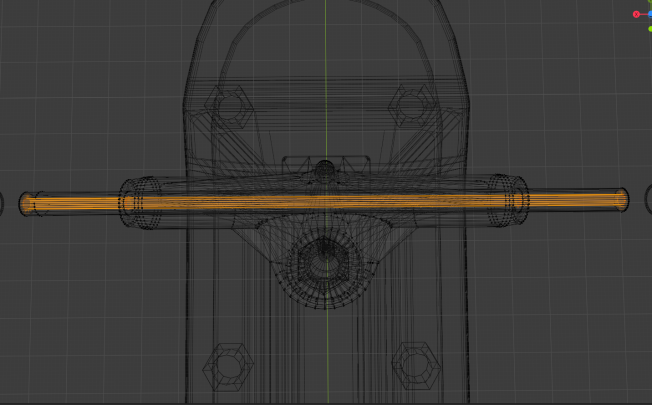
Bushings
The small urethane/rubber parts that are attached in the middle of the hangers and the baseplates that allow the hanger to stay in one place. Bushings come in pairs and each pair is installed in one truck. Bushings affect the steering angle of the skateboard. It can be adjusted by tightening or loosening the axle nut.
Hardness of bushings may vary depending on the skaters' preference. Usually street skaters tend to prefer tighter bushings and ramp/transition skaters prefer softer wheels. In the end, it comes down to the skater's preference and style. Some brands feature multiple materials in one bushing aiming to increase its responsiveness.
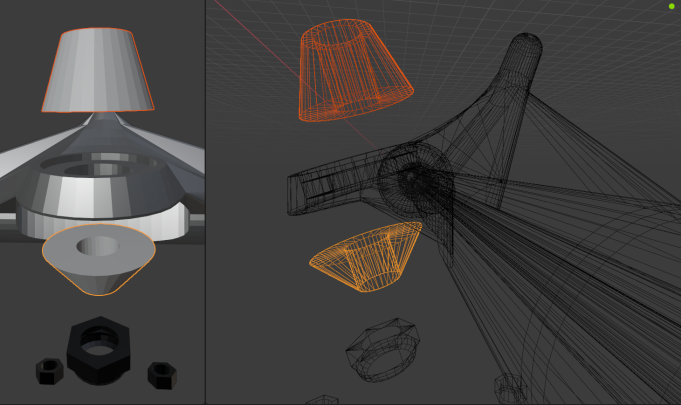
Axle Nuts
Axle nuts hold the wheels in place. Four of them are used to make one complete set of skateboard. They have hexagon shape and usually sized around 5/16 inches.
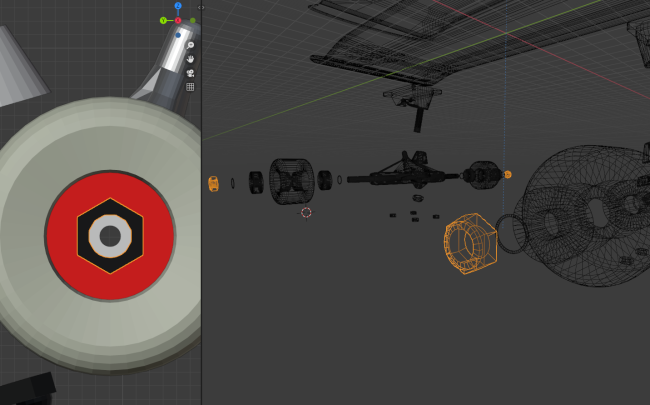
Wheels
Grip, slide and roll in one
The modem wheels are made of urethane and 4 of them are attached to a complete set of the skateboard. They come in different diameter (usually 50 ~ 70 mm) and hardness(78 ~ 100A+).
- Bigger wheels are good at moving fast, absorbing vibration from rough ground but easier to get the wheel bite.
- Softer wheels are good at absorbing vibration from the ground but not as fast as normal ones.
- Smaller wheels are more suitable for flip tricks with smaller weight but less shock absorbent and move slower.
- Harder wheels are good at going fast but less shock absorbent and easier to accidentally slip out.
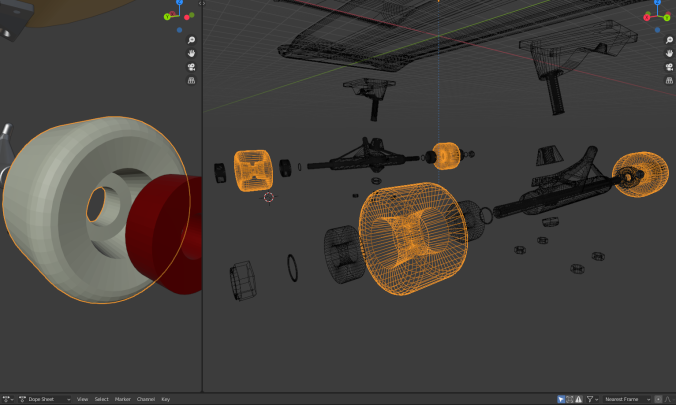
Riser pads
Increases the height of the deck
Pads made of plastic or rubber. The riser pads are used to increase the height of the deck especially when the deck and the wheels touch - also known as the "wheel bite." By raising the height of deck, it can alleviate the wheel bite. Also, sometimes risers are used to absorb impact or vibration from the ground for smoother riding.
Rising the height of deck is not always a good thing: by increasing height, it needs more energy for the tail to hit the ground and the skater tends to find it harder to land tricks as the center of gravity of his/her body is raised higher than usual.

The Bolts and Nuts
Hold them together
One truck has to be held by four bolts onto the deck and a total of eight bolts are needed to make a complete set of a skateboard. Usually Phillips screws are used for the bolts, but sometimes other types of bolts including Hexagon screws are used especially to distinguish the front of the dck from the rear.

Washers
Small in size huge in roll
Washers are installed between the hangers and bearings to help wheels spin smoothly. They play an important roll to evenly distribute pressure of the wheels. This helps the bearings to last longer.

Bearings
The core of speed
Bearings are made of steel rings, small steel balls, urethane holders in-between. A complete skateboard needs eight bearings in total - two for each wheel. They hold small bolls inside and allow wheels to spin faster by reducing friction between the axle and the wheels.
The balls also come in ceramic which tend to be expensive. These high-end bearings crush tiny dust that enters inside of the bearings without damaging the ceramic balls and steel rings, allowing the skateboard go fast for longer duration of time. Bearings are evaluated with ABEC (Annular Bearing Engineer's Committee) ratings which usually ranges from 3 to 7.


 Convert your video into 3D
Convert your video into 3D Facebook
Facebook Twitter
Twitter



